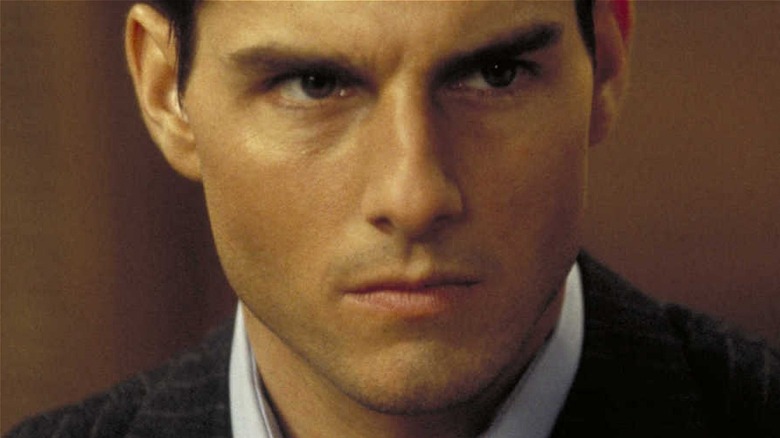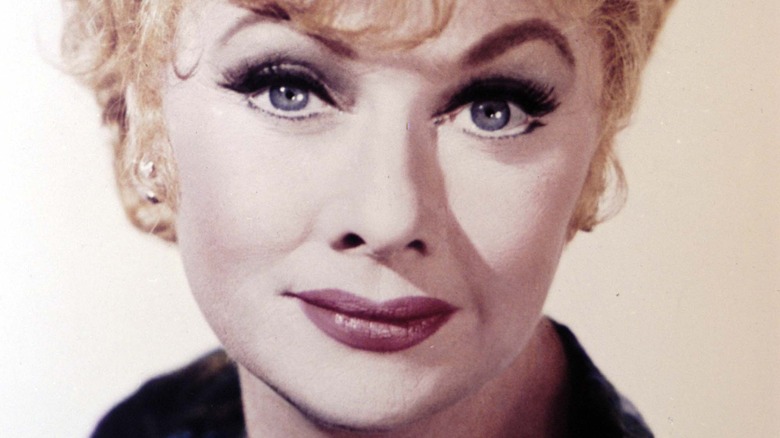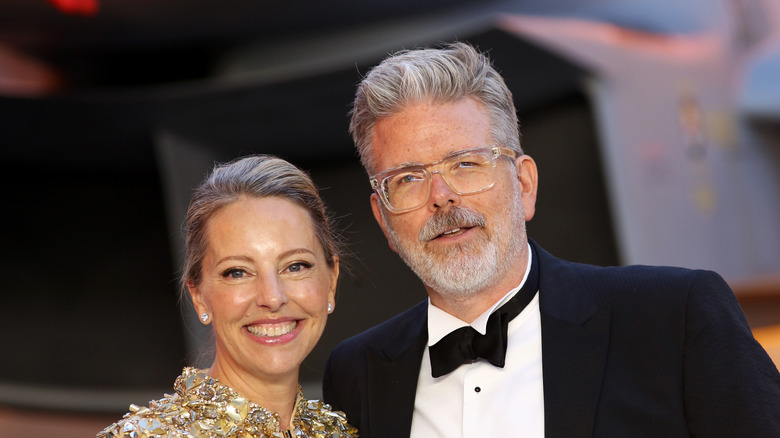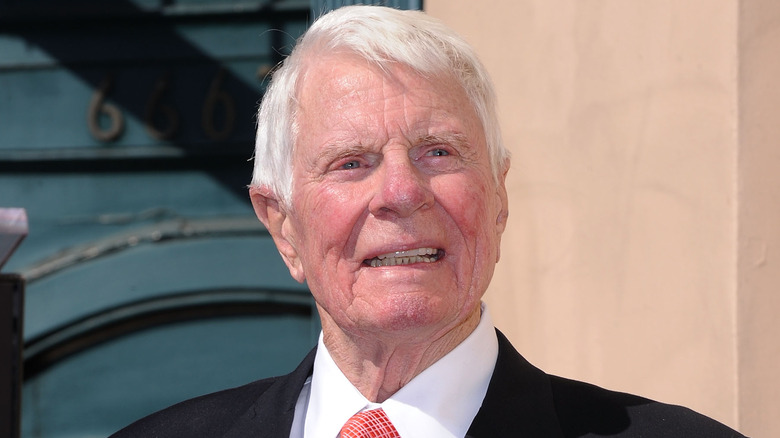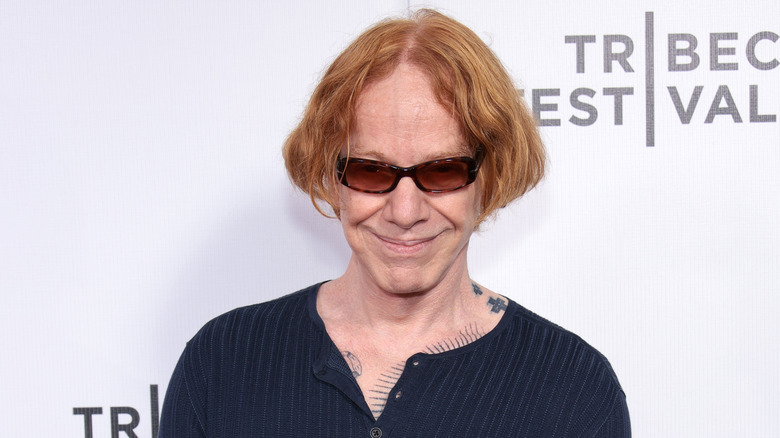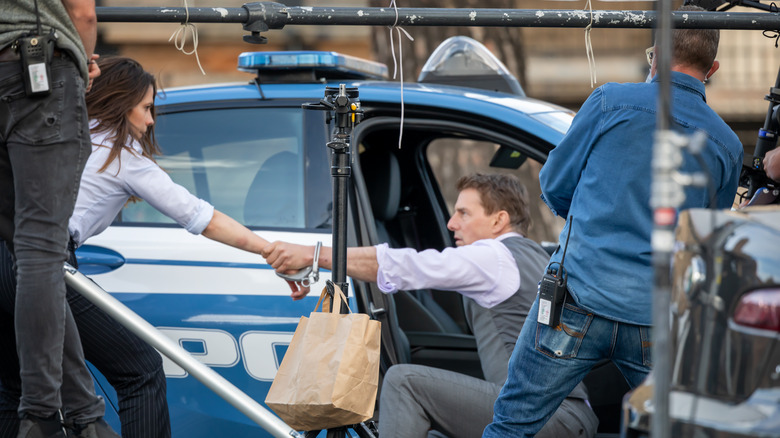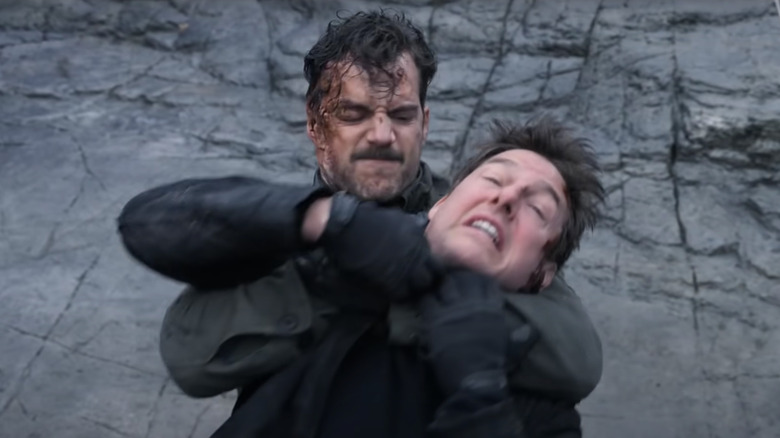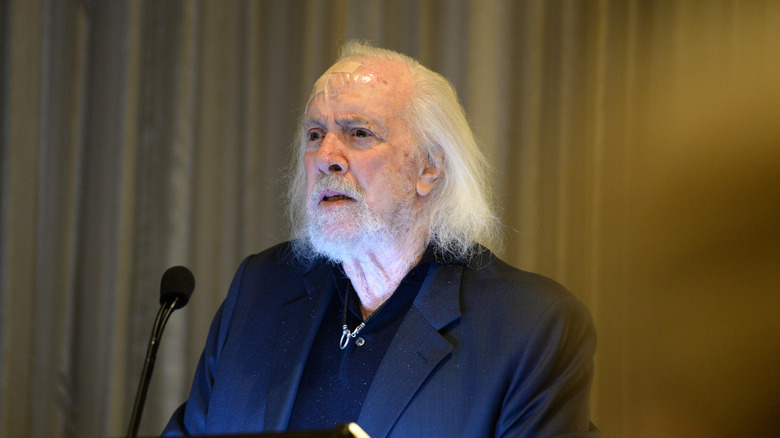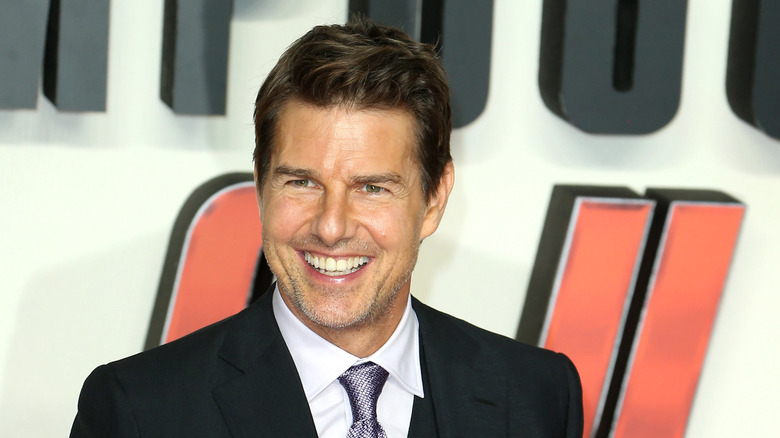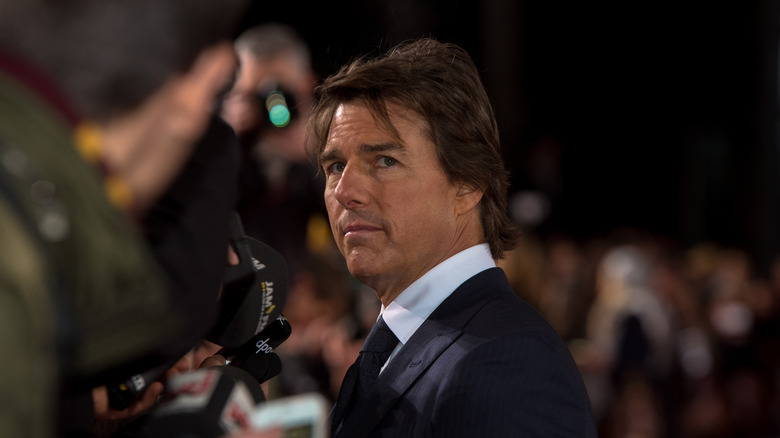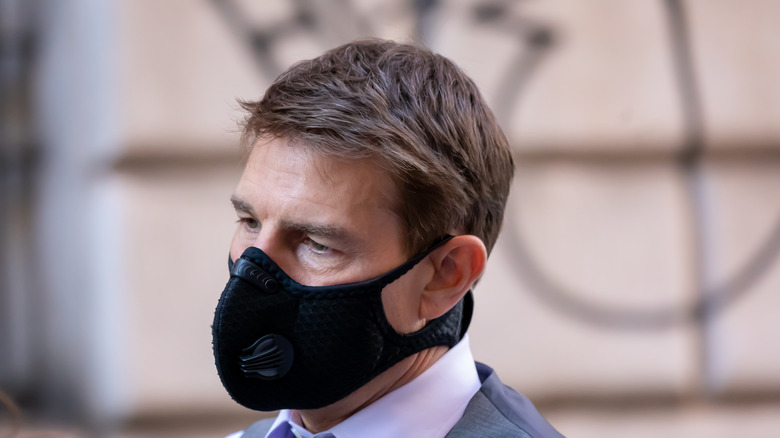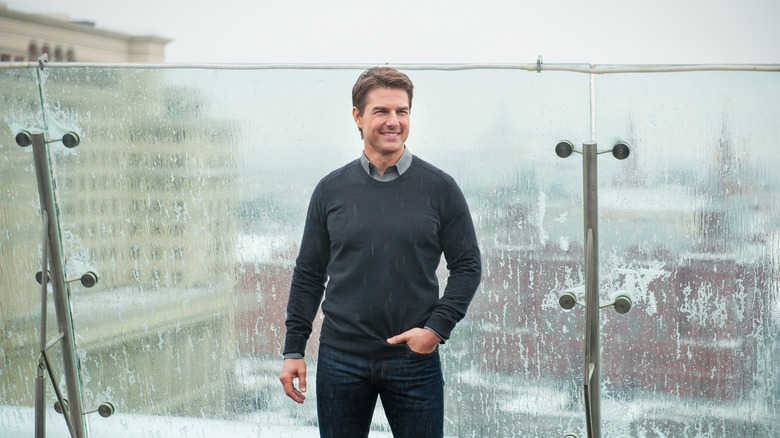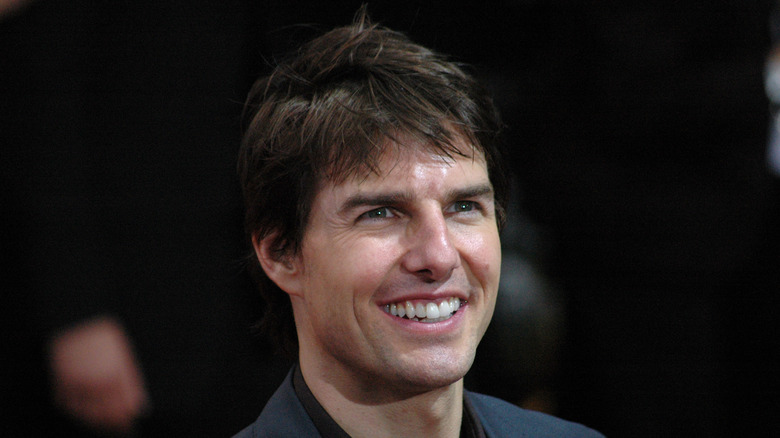The Untold Truth Of Mission: Impossible
"Mission: Impossible" was a hit TV series in the late '60s. Then, in the '90s, Tom Cruise transformed it into one of the most successful action franchises in movie history. While the show was beloved by many fans, Cruise has turned the "Mission: Impossible" movies into their own entity on the level of James Bond, which push the envelope for death defying stunts and action with every installment.
Since the first "Mission: Impossible" film was released in 1996, the franchise has had a remarkable life, attracting some of most talented writers, directors, effects artists, and stunt people in the business. The films have also made a reported $3.6 billion world-wide (via The Hollywood Reporter). Even if you've seen the movies and loved the original show, there's still a lot you probably don't know about "Mission: Impossible." Here's the untold truth about how a TV classic became a major box office juggernaut for the new millennium.
The original show was produced by Lucille Ball
"Mission: Impossible" ran on CBS from 1966 to 1973. Its opening titles became iconic, with the imagery of a fuse being lit while the classic theme from legendary composer Lalo Schifrin kicked into high gear. Every week, team leader Jim Phelps, played by Peter Graves, would be told, "Your mission, should you decide to accept it..." before getting his assignment. Every assignment ended with, "This tape will self-destruct in five seconds," and the cassette would go up in smoke.
These days, audiences associate Tom Cruise with "Mission: Impossible" and fans of the classic show will have fond memories of Peter Graves, but there's a famous face that many people may not realize was behind the original series: the legendary Lucille Ball. "Mission: Impossible" was produced by Desilu, the production company founded by Ball and her then-husband and co-star Desi Arnaz (aka Ricky Ricardo). In 1966, Ball and her company set up "Mission" at CBS and a little sci-fi series named "Star Trek" at NBC, and both shows gave Ball greater clout in the industry as a producer (via Business Insider). "Mission" was a bigger hit in the ratings than "Trek," although "Trek" of course became a big cult phenomenon in re-runs.
The Mission: Impossible films have had some great writers
The "Mission: Impossible" films not only have the major star power of Cruise, but they also have had great directors at the helm (like Brian DePalma and John Woo), and some of the best writers in the business. The first "Mission" is credited to David Koepp ("Jurassic Park"), Steven Zaillian ("Schindler's List," "The Irishman"), and Robert Towne, who wrote one of the best films of the '70s, "Chinatown." Towne came back for the second "Mission," and Hollywood wunderkind J.J. Abrams ("Lost") came aboard to write and direct the third. Brad Bird, known for helming animated classics like "The Iron Giant," "The Incredibles," and "Ratatouille," made his live-action directing debut with "Mission Impossible: Ghost Protocol."
Since then, Cruise has had a steady partnership with Christopher McQuarrie, who wrote one of the best crime thrillers of the '90s, "The Usual Suspects." McQuarrie has been in the director's chair for all of the "Mission" films since "Rogue Nation." In addition, McQuarrie co-wrote the script for "Top Gun: Maverick," which became one of the biggest box-office smashes of 2022, and he's also done a lot of script doctor work uncredited. (McQuarrie reportedly did a rewrite on "Star Wars: Rogue One," per Collider.)
There's even more remarkable talent that was almost involved in the franchise. Before Abrams came aboard, the third "Mission" had a hard time landing a director, and David Fincher was one of several filmmakers considered. According to Collider, Fincher and Cruise did some work coming up with the concept for a third entry, but Fincher left and moved on to "Zodiac." Joe Carnahan ("Narc") was also considered to direct before they landed Abrams.
The original cast was not happy with the first movie
Much of the cast of the original "Mission: Impossible" TV series were around when the first Tom Cruise movie went into production, but none of them appeared in the film. As it turns out, they weren't happy with how the story was updated.
As Martin Landau recalled (via MTV), "When they were working on an early incarnation of the first one -– not the script they ultimately did –- they wanted the entire team to be destroyed, done away with one at a time, and I was against that. It was basically an action-adventure movie and not 'Mission.' 'Mission' was a mind game. The ideal mission was getting in and out without anyone ever knowing we were there. So the whole texture changed."
Peter Graves wasn't happy with the movie, either, especially considering his character Jim Phelps was turned into a villain. "I am sorry that they chose to call him Phelps," the actor said (via CNN). "They could have solved that very easily by either having me in a scene from the very beginning, or reading a telegram from me saying, 'Hey boys, I'm retired, gone to Hawaii. Thank you, goodbye, you take over now.'" Another original member of the "Mission" team, Greg Morris, saw the final product and walked out of it (via CBR).
The music of Mission: Impossible has involved iconic talents and landmark court cases
Even if you don't know the name Alan Silvestri, you certainly know his music, because he wrote the iconic theme to "Back to the Future." He was also set to be the original composer on the first "Mission: Impossible" movie, but he was replaced by Danny Elfman.
Elfman had five weeks to write and record a new score — talk about mission impossible — but as Elfman explained (via Soundtrack Magazine), "Anybody coming in second has a huge advantage of understanding what the director doesn't want -– at the expense of a lot of work already put in. I knew that they wanted energy; they wanted something a little more operatic and theatrical, just seeing the movie without a score."
For "Mission: Impossible II," Metallica (who had never written a song specifically for a movie soundtrack) contributed "I Disappear," and when the song leaked onto Napster, it changed the landscape of the music industry forever (via Kerrang). In a landmark case, Metallica sued Napster over the leak in 2000, but the file-sharing genie was out of the bottle and the stage was set for downloads and eventually streaming to become a huge part of how people listen to music. For today's musicians, trying to make royalties off their music can feel like an impossible mission in its own right.
Mission: Impossible pioneered virtual sets
The '90s saw the beginning of the CGI era, with computer effects rapidly replacing real sets and practical photography as filmmakers gained the ability to create entire worlds through the power of digital technology. Of course, virtual sets are commonplace in movies today, but the first "Mission: Impossible" helped pioneer them in 1996.
Virtual sets took a big step forward for an action segment in which Cruise and Jon Voight fight on top of the Channel Tunnel train. As Industrial Light and Magic VFX supervisor John Knoll explained, "We took blue-screen elements of actors and put them into believable CG backgrounds." (The train itself was also created by CG.)
As Red Shark News reminds us, Cruise is going for more realism with his stunts these days, and perhaps he would want to film that segment shot on top of a real train today. Still, this segment in "Mission: Impossible" was a big step forward, opening the door for practically any mind-blowing action segment a director can come up with, without the limitations of imagination, physics, or reality.
Much of the fourth movie was shot in IMAX
Director Christopher Nolan loves shooting with IMAX cameras, giving the audience an even bigger, more spectacular image on the screen. When the "Dark Knight" director started using this technique, it was a big step forward for movie cinematography, and other filmmakers were eager to follow suit. In fact, much of the fourth "Mission: Impossible" film, "Ghost Protocol," used IMAX cameras as well.
"Ghost Protocol" used 30 minutes of IMAX footage, and it also got an early release in IMAX theaters. As a press release for the film explained (via Collider), "These specific sequences will expand to fill the entire screen, exclusively in IMAX, and further immerse the audience in the explosive action and vast scope of the film."
One of the most notable IMAX segments in the film shows Tom Cruise climbing the tallest building in the world, the Burj Khalifa Tower in Dubai. More IMAX segments followed in "Mission: Impossible Fallout," including an aerial sequence and a clifftop battle with between Cruise and villain Henry Cavill.
Sometimes action sequences come before story
The "Mission: Impossible" films have always been known for their stunning action sequences, and the filmmakers know well enough by now to put particular focus on delivering the goods with each new installment. Sometimes, in fact, the stories are built around action scenes, rather than the other way around.
The sole credited screenwriter for 2000's "Mission: Impossible II," Robert Towne had worked with Cruise previously on "Days of Thunder" and "The Firm." Towne had worked as a script doctor on a number of films, including "Bonnie and Clyde" and "The Godfather," so he knew how to come in and deliver great scenes when a movie needed help. But writing a movie around the action scenes was something he'd never experienced before.
As Towne recalled (via Creative Screenwriting), "They said: 'These are the action scenes. What do you think of coming up with a story to fit them?' I said it was an insane idea, but I did it." Towne finally came up with the key to the story from researching viruses. Then the idea dawned on him: What about a villain who creates a deadly virus so he can make a fortune selling the antidote? It's a chilling idea for an action film, and it would be even more scary today in a post-COVID world.
Mission: Imposible Fallout started without a script
When you're making a big blockbuster action movie, going in without a finished script is begging for trouble. Yet "Mission: Impossible – Fallout" initially didn't have a script, just an outline. McQuarrie, is of course, a great screenwriter, and if he has to fly by the seat of his pants, he'll still most likely land on his feet. But at the same time, with the "Mission: Impossible" films being famous for intricate and complicated storylines, it can be a recipe for disaster if you don't have a script. (Actually, this can be big trouble for any movie.)
According to The Hollywood Reporter, the shoot began with 33 pages of script, and McQuarrie and Cruise improvised from there. As McQuarrie said, "The finished screenplay actually confines and limits ... all I really need to know is where is the location and what assets need to be there on that day including vehicles, props, sets and actors."
Before taking the director's chair for every installment starting with "Rogue Nation," McQuarrie had his first brush with "Mission: Impossible" when he joined "Ghost Protocol" for some uncredited rewrites. As he later explained (via Cinema Blend), "The action was mostly there. But it was there in ways that were part of a story that wasn't integrated into the action. You didn't know what was in the suitcase, you didn't know what was in the envelope, you didn't know what the villain was doing."
The Mission: Impossible films launched Tom Cruise's producing career
All throughout Hollywood history, actors have produced their own films, started their own production companies, and in the case of United Artists, even launched their own studio (UA was created by D.W. Griffith, Charlie Chaplin, Douglas Fairbanks, and Mary Pickford, via History). Tom Cruise became his own producer on the first "Mission: Impossible," and this has made him very rich.
As Variety reports, Cruise is taking less money up front for the next "Mission: Impossible" movies, but he's getting a big chunk of the movie's first-dollar gross, and as this report explains, this means that he'll be taking home sizable bonuses even before the studio gets the full return on its investment. (A star often has to wait for the film's final back end gross to be tallied before they get a piece of the action.) Cruise's deal for "Top Gun: Maverick" means he could make over $100 million, and he's certain to make a truckload of cash on future "Mission" films as well.
Mission: Impossible 7 will have Cruise's most dangerous stunt yet
As "Mission: Impossible 7" was being hyped at CinemaCon 2022 in Vegas, McQuarrie promised the film will have "by far the most dangerous stunt we've ever done" (via Entertainment Weekly). In order to pull this stunt off, Cruise needed 500 hours of skydiving training, and he had to perform 13,000 bike jumps to nail the landing perfectly.
Beyond the stunts, the "Mission: Impossible" shoot was also dangerous because of the pandemic. (Cruise made headlines for some heated exchanges with crewmembers who failed to follow a strict masking mandate.) Cruise and McQuarrie also both reportedly caught the virus, and McQuarrie had to be hospitalized (per The Hollywood Reporter).
Apparently, Cruise has had the urge for dangerous stunts since he was a kid. He revealed at the Cannes Film Festival that he jumped off his roof when he was four years old, making a parachute out of a sheet (via Evening Standard). "The moment my feet left the roof I realized that this was not a good idea," he said. "Either it would kill me or my mother would."
Mission: Impossible 6 withstood a stunning storm of complications
A lot goes into a movie, and with "Mission": Impossible 6," McQuarrie told the world in an Instagram post just what challenges went into making the movie: "3000 setups, 13 helicopters, 6 pregnancies, 5 hiatuses, 4 weeks of aerial photography, 3 continents, 2 winters, 1 broken ankle. That's a wrap."
The broken ankle belonged to Cruise, who was injured in a stunt. As Cruise explained on "The Tonight Show" (via The Hollywood Reporter), the stunt was "the easy one where I'm running and I jump from one building to the next." According to a report in Far Out, Cruise was back in action seven weeks after his injury. As to why he does his own stunts, he explained, "It has to do with storytelling ... it allows us to put cameras in places that you're not normally able to do."
The actor also added, "The first time of any stunt is nerve-wracking but it is also exhilarating. I have been told a few times during shooting a stunt to stop smiling!"
Cruise is hoping he can save movie theaters
Since COVID hit, the movie industry has been on shaky ground. A number of movies were delayed, productions were shut down, and many were scared that streaming would wipe out the theatergoing experience. As the industry attempts to settle into a new normal, Tom Cruise is hoping he can save theaters with "Top Gun: Maverick" and the upcoming "Mission: Impossible" movies. The next "Mission" films will be released in two parts, and Cruise set up "Top Gun" to have a 90-day theatrical window, giving it as much time as possible to make money at the box office (via Forbes).
Cruise initially wanted "Maverick" to have a 120-day theatrical run before the movie went to streaming and other secondary markets, but studio negotiations whittled that down to 90. Forbes speculates that Cruise could use the success of "Maverick" as a bargaining chip for release terms on the next two "Mission" films, which could also play a big hand in saving the theatrical experience for movie fans.
As Cruise himself wrote on Instagram (via CinemaBlend), "We made ['Top Gun: Maverick'] for the big screen. And we made it for you, the fans. I hope you enjoy the ride this weekend."
He also stated at the Cannes Film Festival (via El Pais), "I make movies for the big screen. I make movies for the public." He went on to promise that "Maverick" never would have been released direct to a streaming platform. "That will not happen. Ever. Movies have to be seen in theaters. There you feel part of a community, you share the experience."
